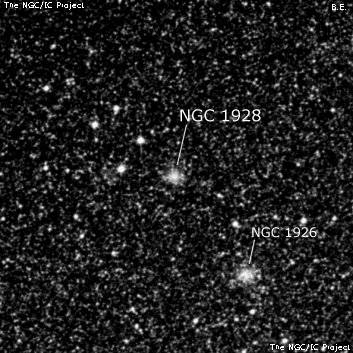
John Herschel discovered NGC 1928 = h2839 on 3 Nov 1834 and recorded "pB; R; 60". Situated in the main body of the Nubecula Major." On a second observation he wrote "vF; R; gbM. Field full of the nebulous light of the great Nubecula. His position is accurate, though a second sweep placed it 20 sec of RA too far west.
James Dunlop possibly made an earlier observation of NGC 1928, recording it as D 131 on 3 Aug 1826 and reporting "a very faint ill-defined small nebula." Dunlop made a single observation and his position is 1.7' S of NGC 1928. But his position is just 2' NE of NGC 1926, which is slightly brighter, and I'm a bit surprised Dunlop would notice one of these clusters and not the other. Another possibility is D 131 refers to NGC 1922, which is 5.6' W of his position. Unless there is more unpublished information, I don't see how an assignment can be made (Steinicke gives both NGC 1926 and 1928).
600/800mm - 24" (4/5/08 - Magellan Observatory, Australia): at 200x; fairly bright, fairly small, round, 40" diameter with a symmetrical appearance. Forms the last of three clusters with NGC 1926 3.4' SW and NGC 1922 6' WSW, along the richly populated central bar. A very distinctive trapezoid of four mag 10-11 stars (sides 1'-1.5') is just a couple of arc minutes to the NE. NGC 1928 is one of 15 bona-fide ancient GC's in the LMC.
Notes by Steve Gottlieb